
If anything’s predictable about the work of Afton Wolfe it’s the unpredictability. He has such a wide range of references and influences that you never know what’s around the next corner. The first surprise about ‘The Harvest’ is that there are no Afton Wolfe originals. The second surprise is that all of the songs are written by his father-in-law L.H. Halliburton so the album’s all about performance and interpretation of someone else’s songs, bringing all of his influences into play. Afton’s gravelly baritone serves all seven songs on this project perfectly the slightly sinister ‘Hello, Mr. Wolf’ – more about that later.
The album opens with ‘The Harvest’ which bounces along with hints of Van Morrison’s ‘Bright Side of the Road’ to put forward the idea that the year should begin in the fall with the harvest, rather than in spring with the sowing. ‘New Orleans Going Down’ has an unsurprising Dr John feel with the full band (including piano, of course). The vocal delivery echoes the rising of the flood water, becoming more impassioned with each chorus as the water levels become more dangerous. The next two songs get to the heart of Afton Wolfe; if you threw the DNA of Bob Seger and Tom Waits in a blender, you would get something close to Afton Wolfe vocally and stylistically.
The gospel-tinged ‘Lost Prayers’ with piano and fiddle fills evokes the classic mid-tempo Seger song, while ‘Hello, Mr. Wolf’ with its gruff spoken lyric and its off-kilter sparse arrangement and comparison of the wolf with human animals echoes Tom Waits at his most raw. The next two songs both look back in terms of style. ‘Till the River No Longer Flows’, with its message of persistence in the face of adversity has a big Southern rock sound in the good old Lynyrd Skynyrd style, including the obligatory extended guitar solo to the finish. ‘Mississippi’ has Afton exploring his soul/Stax roots with horns and piano triplets as he delivers L.H. Halliburton’s message to the state that mirrors Neil Young’s seventies message to Alabama. The album closes with the very lo-fi ‘Here to Stay’ exploring loneliness over a stuttering, reverbed piano backing saturated with tape hiss. It’s very evocative, bordering on disturbing.
‘The Harvest’ is an interesting project. Afton Wolfe doesn’t shy away from covers and interpretations, but covering seven songs by the same writer is a different challenge altogether and he absolutely aces it with his usual variety of styles and distinctive vocal delivery. Whatever Afton Wolfe tackles, you know it’s going to be interesting.
‘The Harvest’ is out now on Grandiflora Records.
Here’s the official video for ‘Lost Prayers’:

KB Bayley’s last album ‘Little Thunderstorms’ was recorded during lockdown and had a very definite UK feel with a hint of COVID claustrophobia. ‘Flatlands’ is a very different album. It’s almost a solo performance with KB underpinning his intimate vocals with some widely varied Weissenborn arrangements and a smattering of haunting harmonica from Gavin Thomas on a couple of tracks. ‘Flatlands’ has also shifted its focus to the other side of the Atlantic with four covers of American songwriters and many American references in KB’s 6 self-penned songs.
So, ten songs played almost solo by KB with just the Weissenborn. If you wanted to choose a stringed instrument that gave a varied range of backing options, the Weissenborn would be near the top of the list – open tuning and the horizontal lap playing position make it a formidable backing instrument in the hands of a good player and KB Bayley is a very good player, creating a wide variety of soundscapes to enhance the narratives. Both the vocal and the Weissenborn are close-miked; you can hear tiny string noise and KB keeps the vocal intimate and slightly raw without having to push too hard.
A sense of loss runs through the album, the damage to communities caused by progress and the yearning for those little but important moments from the past that went by almost unnoticed at the time but take on importance as time passes. Part of the American feel comes from the well-chosen covers, Jean Ritchie’s ‘The L&N Don’t Stop Here No More’, Tom Waits’ beautifully-crafted ‘Johnsburg, Illinois’, Kelly Joe Phelps’ ‘The Black Crow Keeps on Flying’ and Jason Isbell’s ‘Maybe This Time’ seems to cut across the nostalgia theme by saying we should get rid of old faiths and superstitions, echoing the starting afresh theme of KB’s own ‘Year Zero’. KB has very cleverly pulled together six of his own songs and four favourites by other artists to create a unified piece with strands of nostalgia, regret and religious references running through it. His own song ‘Driftwood Avenue’, with Gavin Thomas’ haunting harmonica contains the line “Look for what’s been lost” and the first two verses reference the loss of Art Garfunkel and Paul Simon’s friendship.
It’s not easy to create a solo album with voice and instrument (apart from the harmonica contributions) but the versatility of the Weissenborn and KB’s fingerstyle mastery create a variety of textures for the songs that make a very satisfying album.
‘Flatlands’ is released on Friday November 4th.
We reviewed Afton Wolfe’s debut solo album In June 2021 and Allan loved it. “Kings for Sale” covered a wide range of styles and emotions and was one of those pieces that send you to your search engine to seek out more information about the themes covered in the songs. Afton has kindly agreed to share his favourite covers from his shows this year. As you would expect, it’s an interesting list.

2021 has been such a transformative year for me personally, and like so many other folks like me who live to write and perform the Language, it was a chance to get back on stage and make that Connection with people – on and off stage – that I covet so. I write (or discover) songs primarily, and I know that many of my sistren and brethren have different opinions about playing covers, but I personally love playing songs that mean a lot to me and have influenced my search for the Magic Connection of Music. I try to keep it to one or two cover songs per performance, and I don’t typically play standards or wedding songs like Mustang Sally or Margaritaville (though those are both wonderful songs), but I have no reservations about playing others’ songs in general. Like Dylan said, “I’m a song and dance man.” So, for my High Five, I wanted to highlight a few performances of songs I didn’t write (or discover) that were a part of this special year. These are in chronological order I think.

Please Don’t Let Me Be Misunderstood – June 11 – The Lounge at the City Winery, Nashville, Tennessee.
This song, written by Bennie Benjamin, Horace Ott and Sol Marcus for the great Nina Simone, but popularized shortly after by The Animals, is one of the greatest songs ever written – universal lyrical theme, fantastic melodic interplay, and raw, bluesy foundation. I fell in love with Elvis Costello’s version first, before ever hearing Nina Simone’s. My friends and I performed this on the night of the release of my record Kings For Sale. It was a magical night, and this song was one of my favorite moments of the night. The version we ended up with had elements of Nina, Elvis and the Animals, but we really just let the song guide us.
I’m just a soul whose intentions are good.

Something’s On Your Mind – July 19 – The Basement, Nashville, Tennessee
Written by Dino Valenti, this beautiful song was originally recorded by one of my favorite vocalists, the great Karen Dalton. It is also a favorite of my friends that I play music with, and one day, while driving my dear friend and fantastic violinist Rebecca Weiner Tompkins to a rehearsal, it was playing in the car, and we decided that we should perform it. My voice doesn’t sound anything like Ms. Dalton’s ghostly wail, so we thought it would make a unique performance. I think it did.
I’ve seen the writing on the wall.
Who cannot maintain will always fall.

Come On Up to The House – September 22 – Brooklyn Bowl, Nashville
You may be aware of this already – I don’t go out of my way to keep it secret – but I’m a pretty big Tom Waits fan. My voice, strangely enough, was actually shredded up by being in a metal band in my teens before ever hearing Mr. Waits’ music, but I admittedly have since used said voice to cover Mr. Wait’s Music and my pursuit of accuracy has not done my nodules any favors. In any event, this was a really fun time, because it was an invitation from my friends Cordovas, who are at the same time some of the coolest, nicest, most generous and sweet dudes and also one of the best live bands you’ll ever be fortunate enough to see, if and when you do. They asked me to come join them for their AmericanaFest pre-party at the Brooklyn and Joe hand picked this song for me to sing with them. I eagerly and gratefully accepted, and I predictably killed.
Come down off the cross;
we can use the wood.

Cure For Pain – 320 Fifth – October 2 – Laurel, Mississippi
Morphine is objectively the greatest band that’s ever been; I actually wrote a paper about it in a philosophy class in undergrad. But the crux of my objective argument comes down to how hard it is to cover a Morphine song well, considering how unique their entire project was. So, when I went on a little tour this fall, I figured I’d give this song a try, because I had great musicians with me that I knew could pull it off. It didn’t sound like Morphine, but I also believe that it’s hard (if not impossible) to play a great song too poorly.
I propose a toast to my self control.
See it crawling helpless on the floor.
Someday, there’ll be a cure for pain.That’s the day I throw my drugs away.
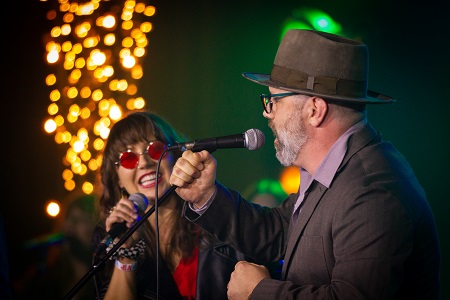
Acadian Driftwood – Basement East – East Nashville, Tennessee
A tradition in Nashville for the last several years has been The Last Waltz tribute show, where the coolest folks in Nashville come together and pay tribute to one of the greatest concerts in music history. This was my first time being a part of it, and it was an honor. The Band was a huge influence on me growing up, and The Last Waltz the movie is one of my favorite films ever. I sang half of Acadian Driftwood, sharing lyrical duties with the fantastic Van Darien, as a part of the great Jon Latham’s band The Lifers. I have no problem admitting that pretending to be a Canadian for one song, while an honorary member of the Lifers, though, is the height of my own pretension, as far as I can remember. Oh well. I had a blast.
This isn’t my turn; this ain’t my season.
Can’t think of one good reason to remain.
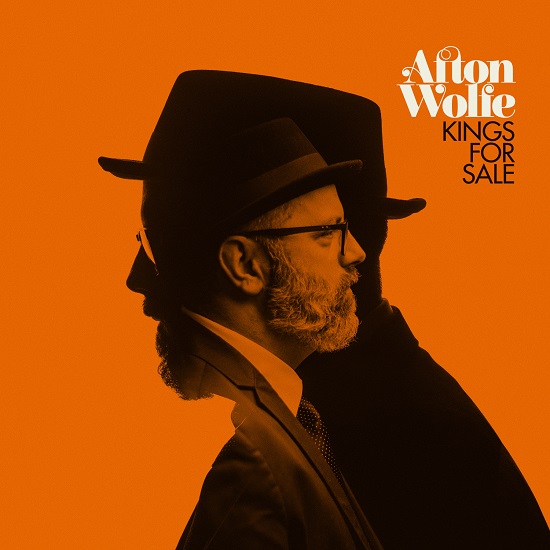
It’s been a long time coming; after over twenty years of making music, Afton Wolfe has finally released a solo album. It’s worth waiting for. “Kings for Sale” is an album created by an artist with an intimate knowledge of the underside of the music business; its compromises, its failures and its occasional successes. This is an album of flawless songs (originals and interpretations) delivered in a rasping baritone over a wide variety of musical settings. The scope of the arrangements, the raw vocal and the subjects of the songs make the Tom Waits comparisons inevitable, but you can hear many other influences there, including a nod towards Greg Dulli’s solo soundscapes on “Cemetery Blues”.
There’s a lot happening instrumentally on “Kings for Sale”, although it’s more about atmosphere and ambience rather than a constant presence from the start to the finish of a song. Afton also uses speech samples and sound effects to create the perfect sonic settings, whether it’s spoken word intros or water flowing through a song. Everything’s there for a reason and nothing’s wasted. And this is probably the moment to get this out of the way; the unusual soundscapes and subject matter, and the rough-hewn baritone voice have more than a hint of Tom Waits. There, I’ve said it.
The album swings into action with a full band and horns on “Paper Piano”, a story of growing up poor and using imagination and creativity to deal with the poverty. It’s a great groove to catch the attention from the letter A and even has a Van Morrison-esque piano breakdown before the big finale. At the other end of the album is a song at the other end of the scale. “O’ Magnolia” is delivered in the style of a hymn by a church choir and is an exhortation to the state of Mississippi to change its flag to remove the old Confederate imagery and replace it with something more representative of the 21st century, namely the state flower, the magnolia*.
Between the opener and the closer, there’s a treasure trove of musical styles and lyrical themes from the slow country fiddle and pedal steel of “Carpenter”, using biblical imagery to tell a story of misunderstandings in crowded, alcohol-soaked rooms to the doom-laden grunge of B.W. Goodwin Jr’s “Cemetery Blues”. The lyrics are minimal, but the sonic treatment creates an atmosphere of menace and foreboding; it’s difficult and beautiful. A personal favourite, following on from “Cemetery Blues” is M.J. West’s “Mrs Ernst’s Piano”, a story of the tentative first steps on a journey to racial equality that’s still far from complete.
Nine songs and nothing resembling a damp squib; Afton Wolfe’s own songs and the carefully chosen interpretations combine to create a lovely blend of styles and lyrical themes. And there are a few thought-provoking references. The word ’cover’ appears twice, a reference to the compromises a musical innovator has to make to survive financially, while the opening line of the album, ‘Every good boy does a little bit better’ references the mnemonic used by educators to teach the notes on the treble stave. That’s the level of detail that you can pick out from these songs.
“Kings for Sale” is out now on Grandiflora Records. Here’s the video for “Dirty Girl”, a road trip down through Mississippi to New Orleans:
*The new Mississippi flag was officially adopted on January 11, and it looks like this:
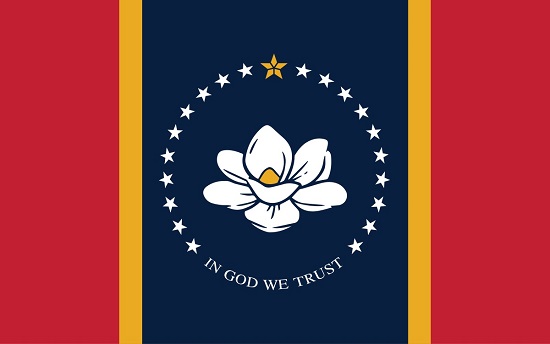
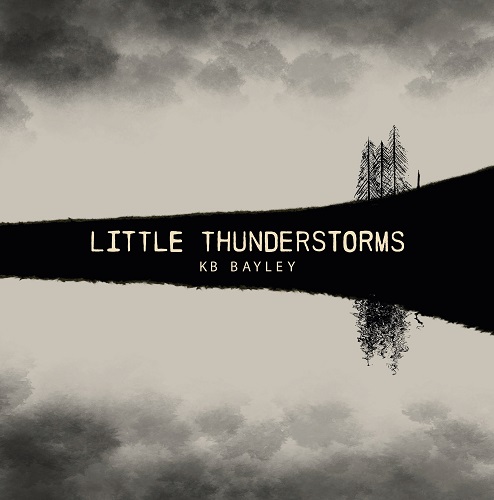
The opening line of the press release for “Little Thunderstorms” introduces KB Bayley succinctly: ‘Guitar player, songwriter, composer. Lover of wood, steel, valves and song.’ It’s good as far as it goes but it’s far too modest; there are a few superlatives missing in the first sentence for a start. KB’s a stunningly good player who knows what to play (and what not to play) to accompany his vocal. There’s quite a list of musicians playing on the album, but none of the arrangements feel cluttered as the players are used sparingly to create moods and atmospheres, such as the melancholy pedal steel on “Throw It in the River” and the muted trumpet three-in-the-morning jazz club feel of “Night Dogs”.
The songwriting’s powerful and personal and it’s obvious that KB has a keen interest in the art of the song and great writers. “Night Dogs” in name and arrangement is a nod in the direction of Tom Waits, while the album’s opening song “Cold Rain” turns around Leonard Cohen’s line from “Anthem” to ‘someone said there’s a hole in the sky where the night gets in’. Despite KB’s reputation as a session guitar player, the songs aren’t dominated by guitar gymnastics; they’re individual works of art where the words, melody and instrumental backing work together to evoke strong feelings and sometimes painful memories.
“Blood Red Lullaby” aside, with its initial setting in Dallas and JFK reference, “Little Thunderstorms” is a very British album, packed with references to the north-east of England, where KB grew up, and the south coast where he now lives. The sea and the shore are the constants that will always pull us back regardless of how far we leave them behind, and the little thunderstorms are the things that happen to us between leaving and finding our way home again.
Almost inevitably for a touring musician, there are a couple of road songs, the laid-back jazz of “Night Dogs” telling the ‘same hotel, different town’ story, while “Time to Leave Town” is the ‘same partner, different town’ story. Of the album’s eleven songs, there are nine originals plus Jeffrey Foucault’s “Cheap Suit” (a beautiful song about the persistence of a dream that hints at passing the dream to the next generation) and a slide resonator version of the traditional “Wayfaring Stranger (Redux)” that has echoes of Mark Knopfler’s acoustic work – maybe it’s a Geordie thing.
“Little Thunderstorms” straddles the world of the seventies folk singer-songwriters (post-Judas era Dylan when you could use more than an acoustic) and the grittier sound of modern Americana where any mix of styles and instruments is acceptable, and encouraged. The songs are a potent mix of memories where the melancholy outweighs the happy and the vocal is just the right side of raw to pull out the emotion in each one. If that’s your thing (it’s certainly one of mine) then this is the perfect way to start 2021.
If you want a quote to sum up the quality of the writing and the album’s message, how about this: “someone wrote a sign saying ‘jesus lives today’, I look around, I think he moved away” from “Throw It In the River” (check out the video below as well).
“Little Thunderstorms” is released on Friday February 5th on CD, LP and download and streaming services.
 A producer, a photographer and two musicians walk into a pub. Sorry, there isn’t a punchline to this; it’s just what happened. A quick pre-Christmas beer with some music business friends to chew the fat; what do you think we talked about? As always with these semi-unplanned sessions something good came out of it. We’ll leave it to Graeme Wheatley, bass player and songwriter with the band Deep Blue Sea to tell the story, enhancing it with some music trivia. You might want to start this piece whenyou have about an hour to spare because it’s a bit addictive, especially after Riot Towers made a contribution,
A producer, a photographer and two musicians walk into a pub. Sorry, there isn’t a punchline to this; it’s just what happened. A quick pre-Christmas beer with some music business friends to chew the fat; what do you think we talked about? As always with these semi-unplanned sessions something good came out of it. We’ll leave it to Graeme Wheatley, bass player and songwriter with the band Deep Blue Sea to tell the story, enhancing it with some music trivia. You might want to start this piece whenyou have about an hour to spare because it’s a bit addictive, especially after Riot Towers made a contribution,
Sitting in The New Cross House pub the other night with Allan McKay (something that could very easily become habit forming), we were talking about his series of guest articles “High Fives” in Music Riot – sign up now if ya haven’t already!
I’ve written a few before and always like rambling on about whatever, so I was happy to quickly volunteer to write one for this Christmas – even before Allan gave me my first pressie of the year – even if I had no idea what to waffle on about.
We were with Iago Banet, a guitarist from a band that I’ve heard are not that bad and we were talking about a gig we did a few weeks ago. Our singer, Dre Smith, had lost her voice and we were doing the gig as a 3 piece – playing songs we’d never played before. I proudly boasted that I’d sang the entire lyric to “Blinded By The Light” by Brucie without a single rehearsal. Allan asked if I liked Manfred Mann’s version or the original best, then Iago reminded me that after 3 attempts we’d had to abandon “All Along The Watchtower” because I kept getting the first line wrong!!! Pride comes before…
Anyway, this conversation led to the topic of this High Five.
Five covers that I think are better than the original.
Only my opinion here – but when I got to thinking about it – there’s maybe 20 or 30 I could muse about. So, I thought I’d kick it off with two people who I consider to be un-betterable – but concede that in these two occasions, they are bettered.
Song 1
All Along The Watchtower – Bob Dylan – Jimi Hendrix
OK, if you know me at all, you may have heard me at sometime mention the name Bob Dylan. He’s the cat, the verbal acrobat-tery, the lyrical dexterity and temerity in all sincerity. A couple of weeks ago we were playing Bude R&B Festival, which involved a good 4 hour drive back and forth. Amanda Dal, our wonderful drummer, asked me, unprompted, to play the three albums Bob recorded in 1965 that “invented Rock Music as we know it”. Much to Iago’s horror. So we had a great journey back and forth listening to Bob. It’s Amanda’s turn next, so I am going to get 4 hours of singer songwriter LP. The fact that she’s a ringer for Bob makes me favourable disposed to her from the get go – so – I’m ok with this!
Anyway, some people say (fools that they are) that any cover of a Bob song is going to be better than Bob’s version. BUT THEY ARE WRONG!!!! This has only ever happened once in the whole wide universe since the beginning of time. And only one person could a done it. Jimi. Y’know, I’d love to be able to wipe the tape and hear Jimi’s version of Watchtower again for the first time. Can you remember that moment? I can’t. But listen to it now. The swagger, the invention, the sass, the sheer coolness. Four minutes of perfect cool. If Jimi hadn’t recorded it, would we remember the original? Was it just a fairly average track on a subdued and pared back album from Bob who might have been wondering at the time where he was going next. Recorded in 1967 after the “fall” it was a total turn away from the more blues inspired electric albums and a return to his more folkie side, but Jimi took this track, rocked it up, funked it up and delivery to my mind one of the greatest little guitar pop songs of all time.
Oh, BTW, the title of Bob’s album, John Wesley Harding. It was named after a Texan outlaw of that name – only they spelled it wrong!!! He was called John Wesley Hardin.
Compare and contrast:
Song 2
Nothing Compares 2U – Prince – Sinead O’Connor
I was a big Prince fan. Still miss the guy. He might have had demons and might have been just a tad obsessed but look at the catalogue of pop songs. Inventive, fun, joyous, rude, rock and raunch and lovesexy. He made pop a bit dangerous, a lot of fun and a lot of cool – combined a bit of Jimi, a bit of Marc, a bit of James Brown and a lot of genius. Until Sinead covered this song I would not have thought anyone could touch the little chap at his own game. I kinda thought Prince songs were indelibly stamped with Prince’s logo. You can’t touch this….
I wuz wrong. The frailty and fragile nature of the song fits Sinead and both somehow meld. She is the song, the song is her. That just doesn’t happen very often – if at all. That revolting phrase “you owned it” churned out on brain dead TV talent shows ad nauseam for once applies. You can’t think of the song without thinking of Sinead and vice versa. They might be so entwined that it overshadows her career.
OK, that’s two down and just to sum them up, nobody else has done a cover of a Prince song better than Prince and ditto Bob. Argue away, I’m not listening.
Compare and contrast:
Song 3
With A Little Help From My Friends – The Beatles – Joe Cocker
This is weird. The Beatles FFS? The greatest band ever. The greatest song writing partnership of the 20th century. The band that wrote the book (and the sequel). Have you heard some of the covers? “Hey Jude, Hey Bing”? Trust me, it was an album. My dad had it. Can you imagine the scene in our house? He was a jazz musician and I think he made this one attempt to be down with his son. He’d spent some futile time trying to tell me that all of this pop music stuff was nonsense and real music would eventually come into its own and Benny Goodman, Duke Ellington et al would be on Top of the Pops (Pops in this case being hep cat chat for Dads). Suffice to say most covers are cheesy in the extreme or just for shock value with nothing of value added. From Matt Monroe to Siouxsie Sioux. But, Joe? That voice. That presence. That simple honesty and stripped back truth. It’s a song, dare I say, that Paul didn’t really think was the Dog’s Bs so he suggested that Ringo sang it as a little bit of fun “What would you do if I sang out of tune?” and the whimsy fitted the feel of Sgt Peppers. But it was far from a stand-out track.
Now, fast forward a mere year or so. On stage at Woodstock and Joe says “the title of this song says it all”. The song is imbued with something more. A part of the hippy dream is captured in the performance. It’s a time piece. Oh and that voice? Come on. Just go have a listen. Band ain’t too bad either.
Song 4
Respect – Otis Redding – Aretha Franklin
Like Joe, this cover takes the song into places the original didn’t. Like the others too I guess. But with this one, you start pretty high up – with that voice, Otis. A voice that can quite easily make you cry. My Girl? Try A Little Tenderness? I Been Loving You Too Long? I’m tearing up now. And I’m a tough guy…
But Aretha takes a lyric that just might veer towards a bit misogynistic these days – y’know, man works all day – comes home to little lady cooking for him and expects a bit of R – E – S – P – E – C – T – and she makes it the first bona fide feminist mega hit defining moment of the decade. Oh yeah, and it was her major first hit after 10 years fighting against “the man”!!
What Aretha did changed the world. A cover version of a pop song changed the world? Yes, that’s what I said. Made a massive difference to the feminist movement and the civil rights movement. The impact of this little pop song can’t be ignored. That’s how deep my love is.
Oh, BTW, Otis didn’t really like the cover – but learned to live with it when the dosh rolled in – and also – listen to his version – most people think the lyric “R – E – S – P – E – C – T find out what it means to me” is part of the original.
Song 5
Girls Just Wanna Have Fun – Robert Hazard – Cyndi Lauper
For years I’d thought Prince wrote this especially for Cyndi. Someone told me some Fake News and I never questioned it. It’s a great song and it seemed believable. It’s my wife’s favourite “getting ready for Friday Night” song – so I had to include it for her.
There’s not a great deal to say about it other than, in Cyndi’s hands and voice, it’s perfect pop. In Robert Hazards? Well, have a listen to the song below. My main question is, How did Cyndi hear this very very average song and say “I can make this song a mega hit that will last generations and become Graeme’s wifes’ favourite “getting ready for Friday Night song” for all time”? I dunno the answer but one thing I will point out is, the song lasts 2 minutes and 30 seconds and the actual track lasts 4 minutes and 30 seconds. And by strange coincidence, when my wife says she’ll be ready in 15 minutes… you can fill in the rest.
Just before I trot off to have a mince pie, there were a couple of things I considered but rejected and hopefully some of these will incite you to invective 🙂
- Leonard Cohen covers – it’s easy to say other people sing them better than Lenny. That’s not the point. We can all say a photograph of a tree looks more like a tree than a Van Gogh painting of a tree. I don’t know where I’m going with that – other than Lenny is the Van Gogh of pop – funny, sad, dark, deep, tortured and Chaplinesque – there’s a crack in everything – that’s how Lenny gets in. I like his cracks. In his house there are many flaws – all of them interesting.
- Led Zeppelin – when you actually claim to have written all your covers yourselves – it doesn’t apply.
- Anyone covering Tom Waits with a gravelly voice – don’t be silly (Sir Rodney).
- Anyone covering Tom Waits with a lovely voice – as above.
- The Blues – it’s totally impossible to compare Crossroads – Robert Johnson to Cream. Both are wonderful in their own way – and I bet you can think of lots more examples. So, off you go, your challenge is now to name 5 blues songs that have brilliant originals and brilliant – but significantly different – covers.
Many thanks to Allan for allowing me to stop work for 3 hours to write this 🙂
Have yourselves a merry little Christmas, if the fates allow.
Cheers
Graeme
Written before the election December 2019 (I might not be in such a frivolous mood after that).
Sorry Graeme, but we need to have the last word here (not about the election, not even going there), especially after squeezing in two High Fives in one piece, but we did mention another song, which was a band covering their own song. Thin Lizzy’s “Nightlife” version of “Still In Love With You” should have pushed all the buttons as a duet between Phil Lynott and the wonderful Frankie Miller, but it was a bit of a mid-tempo plodder. Someone obviously worked out that it was a potential anthem, slowed it down, stuck a truly wonderful Brian Robertson solo in there and, voila, rock classic.
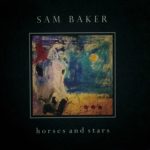 I guess this is one that was inevitable; a live album that was recorded almost by accident, just because they could, and what an interesting piece of work it is. Unusually, this didn’t grab the attention at the first listen and it wasn’t a grower. On about the fourth listen, the power of the lyrics suddenly hit home and everything started to fit together. Sam Baker’s songs are self-contained stories, told with perfect economy; there isn’t a superfluous word as he tells us about the kind of people we’re all surrounded by, whether we know it or not; the single mothers, the alcoholics, the drug addicts, the widows and the guilt-ridden all doing their best to make it through another day. It’s the life of a small Texas town told in twelve small but perfectly-formed chapters.
I guess this is one that was inevitable; a live album that was recorded almost by accident, just because they could, and what an interesting piece of work it is. Unusually, this didn’t grab the attention at the first listen and it wasn’t a grower. On about the fourth listen, the power of the lyrics suddenly hit home and everything started to fit together. Sam Baker’s songs are self-contained stories, told with perfect economy; there isn’t a superfluous word as he tells us about the kind of people we’re all surrounded by, whether we know it or not; the single mothers, the alcoholics, the drug addicts, the widows and the guilt-ridden all doing their best to make it through another day. It’s the life of a small Texas town told in twelve small but perfectly-formed chapters.
The delivery as a live performance matches up perfectly with the stark subject matter. Sam Baker relates the tales in a sung-spoken style that has hints of Tom Waits and an interesting minimalist picked electric guitar style (more about that later), plus a wooden block to tap out the tempo with a foot. It works perfectly because the stark arrangement focusses all the attention on the power of Sam’s writing and the stories of despair and injustice but, ultimately, hope.
Back to that thing about the guitar style. After surviving a terrorist bombing of a train in Peru, which nearly ended his life, Sam’s long and painful recovery eventually led to using his music as a therapy, which included learning to play an upside-down guitar to adjust to the loss of a large part of his left hand. The playing style he’s developed strips all of the arrangements back to basics, shining a spotlight on the beating, bleeding heart of each of the songs.
Highlights? “Mennonite” is a poignant story of an unlikely relationship and forms the centrepiece of the album, “Boxes” is a heart-rending tale of a Vietnam widow and “Odessa” deals with the tragic fallout from a spoilt, entitled upbringing. Seriously though, it’s all good and you get the chance to hear it live in the UK early next year.
“Horses and Stars” is released in the UK on Friday August 23rd.

John Bulley, Steve Stott & Phil Burdett
When I get a message inviting me to visit the Railway in Southend to interview Phil Burdett, there’s only one possible response – when do I have to get there? Well, it was a mid-July Friday afternoon and the interview was livened up by the presence of Steve Stott, superb fiddle and mandolin player with Phil’s ever-evolving band. As always where Phil Burdett’s involved, it was interesting and sometimes controversial. I’ve left out some stuff to protect the innocent and the guilty – sorry Phil. Anyway, here’s how it went.
Allan – To start on familiar territory, with the last album, “Psychopastoral”, the thing that immediately struck me was releasing it as one continuous track, which gets round the whole iTunes download thing about single tracks or whole albums.
Phil – I’m sure they’re quaking in their boots at iTunes, it is a little victory but it’s the best I can hope for these days; Pyrrhic victories. I crave more Pyrrhic victories.
Allan – It took me a while to get this while I listened to it on my trusty old media player on continuous cycle as it went from the end straight back to the beginning, that the album was a cycle from the early morning to early morning a day later. I said at the time that I thought it was an outstanding piece of work, as good as anything you’ve done, I think.
Phil – I must admit, I was surprised, in the sense that it was different from what I used to do and I thought I’m either going to get some new people who like it and hate everything I’ve ever done or just everyone will hate it. You get so involved with it and you think you’re creating Wagner’s “Ring Cycle” and someone tells you ‘This doesn’t make any sense at all. What are you doing? You’ve lost your mind.’ It was pleasing that some people that liked what I do liked it and also some people some that haven’t particularly liked what I’ve done before seem to like it as well.
Steve – There’s probably some of the style that you used to do still remaining but combined with what you’re feeling now, so it covers both ends.
Phil – It’s like Tom Waits, but not quite such a radical change (that’s the next album). He lost a lot of his old fans who said ‘I liked him when he was drunk and living in a dodgy hotel and being a sort of dharma bum’, but you get bored with it. You can come up with many artistic reasons ‘I decided to embrace the idea of a concept album, in my late fifties…’, but basically you’re bored and I couldn’t get into music after the operation and the stuff I went through there. I started playing and did a couple of gigs and I felt like a Phil Burdett tribute act and I thought ‘What am I doing this for? I’m trying to write more songs like this.’ If you’re trying to write something don’t do it. So I thought let’s do something I can’t do, so we’re doing a film now.
I’ve got to do a film soundtrack; there will be songs, and that’s made me and write the songs because I think I need a song here to go over this bit of film.
Steve – There are some great songs, actually, from the demos I’ve heard.
Phil – Thank you. I hope you’ve got that on tape.
Allan – When we were chatting earlier, you were saying something the film being a bridge between “Psychopastoral” and the next album.
Phil – It is; there’s a lot of stuff I wrote in the hospital; morphine is a wonderful thing. I read it back when I sobered up and I thought I have no idea what this man is talking about, then it started making sense gradually and I realised that a lot of it followed on from what I did on the last album but I didn’t want it to be the middle album before I get really depressing with the hospital songs. I thought it wold be nice if it had some other element to it, so I thought ‘Let’s make a film!’ And directly, I thought there was no way I could make a film with on no money, no budget and no actors
Steve – Not strictly true…
Phil – So we are, and the fact that it’s actually happening is what’s keeping me going because even the prospect of doing the bunch of songs I had written felt like ‘Here we go again’ but this will spark it off and it’s also got a visual element to it, which I like the idea of. It’s not a series of music videos joined together, but you know The The did that film, I want it to have that sort of feel to it, but there’s a bit more drama involved (with a small d). We’re not talking “Apocalypse Now”, we couldn’t afford the helicopters…
Allan – And this is not the only film you’ve been involved with recently, is it?
Phil – No, I’m a regular luvvie now. ‘Just in between films, dahling’. It’s a documentary about growing up in Basildon. It was initially about brutalist architecture but it seemed to evolve when the director met a lot of artists from Basildon and they were all so different but they all had a similar theme of a love/hate relationship with Basildon so it was about that; it was good fun. He let me witter on then edited it down to something that was almost coherent, so I was quite pleased with that.
Steve – The people the film’s about, or featured in the film, have all left Basildon, haven’t they? There’s not a single one actually lives in Basildon now.
Phil – Which was hilarious. A lot of the Irish diaspora sing “From Clare to Here” and “Off to Dublin in the Green” but they’re all in Finsbury Park now. ‘We all love it but we’re not going back there. Fuck that.’
Allan – As an ex-pat Scot I completely get that. So, without giving too much away in terms of plot, what’s the story with the film?
Phil – Well the “Psychopastoral” album was basically, the narrative throughout was called ‘the long walk home’ and it’s an idea that I’ve discovered that many of the people I like, in music and literature and poetry, were always disappearing into the wilderness looking for something and what they were looking for was somewhere they could go home and that was the vague idea. A lot of them went to nature; it was based around William Blake, John Clare and Arthur Rimbaud. They all disappeared to derange their senses and they all found out they were miles from home: ‘I don’t feel at home and that’s what I wanted in the first place. I wanted to feel something.’ That’s the idea of that album and going through my traumas, I thought ‘They were all walking’.
John Clare famously walked from High Beach to Helpston; he walked from this lunatic asylum, going home to what he thought was his wife, but was actually his mistress, who had actually died anyway so it was an exercise in the definition of futility. I used him as the central character and Blake was another one who didn’t actually wander, but he wandered in his head. He was seeking angels in the trees; he was a cockney mystic, like the Russell Brand of his day. They were people who had ideas beyond their station and then realised that they wanted to get back to their station. It was the idea of comfort without being comfortable and when you derange your senses there is a sense that nothing makes sense and that can be liberating but, after a while, it becomes just derangement.
Rimbaud gave up altogether and became a gun-runner, Blake started to write about Heaven-knows-what and Clare lost his mind. He thought he was Shakespeare, he thought he was a boxer at one point. So I thought the halfway house of madness is fine because you get the little insights. When that’s happening, that’s great, but once you’re in an asylum and you’re thinking you’re Shakespeare, that’s really not useful as an artist.
Brian Wilson’s an example. Everyone thought ‘How on earth did he write “Good Vibrations”?’ Look at the stuff he wrote once he reached his destination and it’s like a five-year-old writing; wonderfully produced and interesting, but still like a five-year-old. I wanted to avoid that, so while I was in the hospital I wrote all this really depressing stuff because I thought everything was coming to an end but when I came out, I thought it’s not coming to an end but I couldn’t think in the same way as I did.
I thought it was a continuation. I’d lost a leg; Rimbaud lost a leg; Captain Ahab lost a leg searching for something and I grabbed the idea of the long walk home without a leg. That’s basically what this is all about. The further out you get, through drink, drugs, mysticism, anything, the less able you are to communicate it to people because they just think you’ve gone mad. But there’s a point just before it ends, before you do go mad, where it’s really interesting and that’s point I’m trying to hold on to in this film. And then it descends into depression and madness which is what the really interesting third album of the trilogy is about, but we’ll get to that later. I want to make it sound like Steely Dan actually because that’s the only way it’s gonna sell anything, either that or “Berlin” by Lou Reed, which I love, but it’s unlistenable to most people. This will make “Berlin” sound like Five Star
Allan– Looking beyond that, have you got any more plans for live stuff coming up?
Phil – It’s a bit tricky. I’ve lost all my mojo, although I don’t know what a Mojo is apart from a middle-class magazine for people who still like Crosby, Stills and Nash, but I don’t know. I’d like to do it but I want to have a point to it. It’s the same way I feel about the writing; I don’t want to do all this differently and feel I’ve changed my approach and then think ‘Oh, we’ll go and do some gigs’.
I’m having some poetry published at the end of the year and I’d like to include some of that in it because there’s a lot more poetry on the album. I wouldn’t mind dipping my toe in the water by doing stuff with Steve. We did a thing in a church, didn’t we?
Steve – Yeah, St Paul’s church. That was beautiful actually; it was purely acoustic, just a selection of songs that suited the venue. I suppose it was a kind of folky thing.
Phil – It was. I’d like to do that with some poetry, just to see if I can read the poetry. There’s a couple of poetry evenings here where you can just get up and read.
Steve – I think the other thing is to enjoy doing it rather than have the pressure of putting on a big gig and inviting lots of people.
Phil – When we planned to do the album launch gig, I got to the rehearsal and then thought ‘What the fuck am I doing?’. If it had all been rehearsed without me there, I might have been able to turn up and sing it but I was just sitting there thinking that I wanted to do something else, I didn’t want to be sitting there churning out this stuff. It felt it important that the whole process changed, and what I don’t want to do is just get back to ‘let’s do a gig then. All the creativity has stopped, let’s go and regurgitate it live with some feedback.’
Steve – We were doing gigs to promote the albums that we all produced, so the was the reason for the gigs.
Phil – And that’s why they’re all platinum sellers…
Steve – So the question is, do we really need to do that?
Phil – The Leigh Folk Festival, I’d like to do something there next year; not just for ‘Oh, Phil’s singing again and he’s got one leg. Oh, well done, Phil.’ Unless I have my head chopped off, I can fuckin’ sing; Ella Fitzgerald managed and I’m a better singer than she is. (Followed by a loud cackle).
Allan – I suppose the thing is, whatever you decide to do, you’ve got a great bunch of musicians working with you.
Phil – I have, just don’t tell my band. No, it’s true; I’m really appreciative of the musicians I’ve been able to talk into doing stuff for nothing because it would have been very difficult otherwise. I don’t like having a regular band. I used to but now I feel like everything we do something it’s a new band almost because we evolve with this particular bunch, except the drummers…
Allan – That’s all a bit Spinal Tap isn’t it?
Steve – I don’t even know if I’ll be on the next album…
Phil – You are, but you’re playing drums. Just don’t get the drummer’s job, because then you know you’re out. No, it is a bit Spinal Tap with the drummers. The last one did actually spontaneously combust.
Allan – I suppose, Steve, you’ve got double the chance of staying in the band, playing two instruments.
Phil – He sneaks in with a false nose and moustache. ’I’ve found a new fiddle player – fuck it’s Stott’
Steve – I try to make myself as indispensable as possible.
Phil – He does; he’s currently learning the oboe. It’s great; I’m getting in touch now because I’ve got these demos for the soundtrack of the film, so I’m going to send them the stuff and we’ll get together at some point and we’ll go and record. We’ll record it at Senor Al’s (Al Franklinos) because it’s my favourite place at the moment.
Steve – It ties in very nicely with “Psychopastoral” because of the park…
Phil – Well, the songs are very different from “Psychopastoral”, so I would like it to have some continuity and that will come from whatever Al does.
Steve – And it’s the location in Peckham, where Blake’s tree is, so there’s a catharsis there.
Phil – I’d like to point out that he used the word catharsis there. Always avoid the words journey and catharsis.
Allan – And what about some of the other collaborators on “Psychopastoral”?
Phil – One of the linking voices throughout this three-album thing will be Lyndon Morgans (Songdog) who did the narration for the album (“Psychopastoral”) and he’s going to do the narration for the film, the subsequent album and the album after that, so I’m really pleased about that. He’s an old Welsh wanderer, a Celtic wanderer and I need his Richard Burton-like authority. I’ll be making him read stuff he doesn’t understand for the next two albums.
Allan – I must admit, those links on “Psychopastoral” worked really well. His voice is fabulous for those.
Phil – It was the thing I was worried about because it was the thing that was going to make it different in a way and with my zero knowledge of arrangement of the quasi-classical stuff that’s going on in the background, it was either going to be great or it was going to be shit; there is no middle-ground. And it was almost great…
Allan – And is there anything else to throw in before we wrap it up?
Phil – There’s my collection of reggae covers… I’m looking forward, in a way, to finishing this trilogy because I don’t know what I’m going to do after that, and I never felt like that. It was always just ‘Here’s another bunch of songs that I like, I’ll record them with musicians I like and we’ll put it out and some people will like it and some won’t and then we’ll do the Leigh Folk Festival, then we’ll do this, then we’ll play The Railway’. That’s not going to happen, so I’m really interested in what I want to do after that.
Steve – I think we ought to base that on whatever the outcome of the film is. You might want to do another film.
Phil – I’d love to. I’m not sure anyone else will; I’m putting many people in to therapy with this film but that would be great. But then again, I might just think ‘I’ve done that’. I won’t do it just because I’ve made a film and invent some spurious half-arsed concept…
Steve – I was just trying to generate some work for myself…
Phil – I know you were. Talking of which, there’s a collection of folk-based songs that I want to record, so I might do that as a little side project with some real folk musicians. Radical concept, I know. It’s simple; you don’t rehearse, you just have to sober them up. That’s something I wouldn’t mind doing as a side project; it’ll be nice, it’ll be my stardust memory. It was so much better when we wrote songs…
And that was where I switched off the recorder before the descent into totally scurrilous alcohol-fuelled conversation. The Basildon film that Phil refers to is ”New Town Utopia” and it’s a fascinating exploration of the development of the town and its impact on the creative artists living there. You really should watch it.

Photo courtesy of Richard Bolwell
Beth Hart is at the tail end of her USA and British tour that culminates at the Royal Albert Hall on the 4th May, but I’m glad I went to Portsmouth with its bright, clear acoustics and more intimate setting. It may be nearly game-over for this tour, but Hart showed no signs of tiring, she began singing confidently in the auditorium while the band struck up. Working her way through the aisles, shaking extended hands as she sung her opener, “Somethings Got a Hold on Me” towards the stage, dressed in a simple black shift dress.
It’s a small set-up, with a drummer, bassist and lead guitarist, multi-instrumentalist Beth is left to rotate between keys, guitar and acoustic bass (which she is still learning) while doing vocal duties as well. Hart has no new studio album to promote, but has just released “Live & Centre, Live in NY”, not a greatest hits package but an eclectic showcase of mainly more recent material but we get mostly a different selection tonight.
Hart is a long-time collaborator with blues guitarist, Joe Bonamassa, with whom she has made a few albums, but on this tour the lead guitar is taken up by John Nichols. Hart has chosen a set list that moves a little away from the kind of wailing blues she has a reputation for and maybe she has picked songs that her new guitarist can cope with. Nichols arrived on stage with a Telecaster, more known as a rhythm instrument, and my heart sank a little. Although he swapped guitars after every song, it was mainly Telecasters so there were no flourishes or stunning solos to melt the lighting track or thrill the audience.
However Hart clearly loves her craft and a grateful crowd and her charisma shines out, with a more attacking version of “Don’t Explain” and Tom Waits’ jaunty “Chocolate Jesus”. Although she makes covers her own with her heady brew of blues, jazz, soul and country, she also showcased her own writing talents. “Tell Her You Belong to Me” is an emotional rendition of a daughter’s plea to her father regarding his infidelity. Hart’s Mother was in the front row and there was some banter with her on some of the more autobiographical tracks, eventually dedicating “Baddest Blues” to her Mum. Beth Hart easily held the large room, she was engaging with just the right amount of chat. Hart talks openly about her mental health issues, she has bipolar disorder and addiction issues and once blew the $100k she won on a talent show on hard living in 6 months, but sobriety has brought a new focus for her talent, though the sparks of wildness show through in her tough but tender voice.
Watching Hart, you get the feeling that she really loves performing, clocking up a 2 hour show and eventually, after singing “My California” to her tour manager husband, he kissed her then physically pulled her off stage. A three-song encore ensued, ending on “There’s no Place like Home” and a wonderful evening flew past successfully.
The photograph for this piece was taken by Richard Bolwell. You can see more of his excellent photographs and reviews here.
 Ronnie Scott’s: it’s not the first venue you associate with performances by American comedy legends, but Sandra Bernhard’s not your average American comedy legend and this was far from the average twenty-first century stand-up gig. The style and structure of the performance harked back to the jazz and cabaret clubs where music and comedy took equal billing across the night and often across individual performances; the band stayed on stage throughout the comedian’s set and often helped out with improvisations. This was how Lenny Bruce delivered his routines.
Ronnie Scott’s: it’s not the first venue you associate with performances by American comedy legends, but Sandra Bernhard’s not your average American comedy legend and this was far from the average twenty-first century stand-up gig. The style and structure of the performance harked back to the jazz and cabaret clubs where music and comedy took equal billing across the night and often across individual performances; the band stayed on stage throughout the comedian’s set and often helped out with improvisations. This was how Lenny Bruce delivered his routines.
The stage line-up for “Sandemonium” is Sandra plus piano, drums and guitar; her act has developed over the decades from purely stand-up to a combination of songs, observations of everyday New York behaviour, politics (almost inevitably), showbiz stories, family stories and some stream of consciousness, Lenny Bruce-style riffing and spritzing. And that’s before you get to the impressions, which are seamlessly stitched in to the tapestry of the performance, not as stand-alone routines but as a way of smoothly moving the narrative along. Here’s an example.
The show opened with the usual introductions, Sandra talking about the greats who performed on the Ronnie Scott’s stage, segued effortlessly into a Nina Simone in Paris story that evoked the subject perfectly. And another; a routine about talking the subway to work on her “Sandyland” radio show led into a powerful interpretation of Tom Waits’ “Downtown Train”. The framework of the set was tightly constructed but gave the impression of total spontaneity; that’s the work of an artist with a genuine gift and a commitment to hard work. The songs, you ask? Well, it was an eclectic mix that included “Little Red Corvette” and a Pachelbel’s Canon mash-up featuring “Let it Be” and “Take on Me” among others.
This particular show was the third over two nights as part of a short visit combining the gigs and a hectic promotional schedule. Even starting at 11:15, Sandra Bernhard gave her adoring audience a full-on, inspirational performance and was willing to spend time after the gig with every fan who wanted an autograph, a selfie or just to say hello. I’m converted.


